How gamers were given the right to make mistakes - the birth and death of memory cards in game consoles
Hi, Giktayms! Do not think about seconds down, sipping juice classifying game consoles, because the line between nextgen, current-gen and the classics is constantly shifting. But there is one criterion that divided the console into periods “then” and “now” - memory cards. We recall how the drives for saving games first became the “passport console gamer”, and then died, and were born again in the newest game consoles.

“... and gaming machines in the past had such a thing as a memory card, granddaughter. The technique was amazing! You used to go through a game, and everything you achieved in it stays with you in a tiny memory chip, less than a palm of your hand! We were so surprised when we realized that it was possible to play not in one gulp, but even without a notebook with recorded level passwords at hand ... ”.
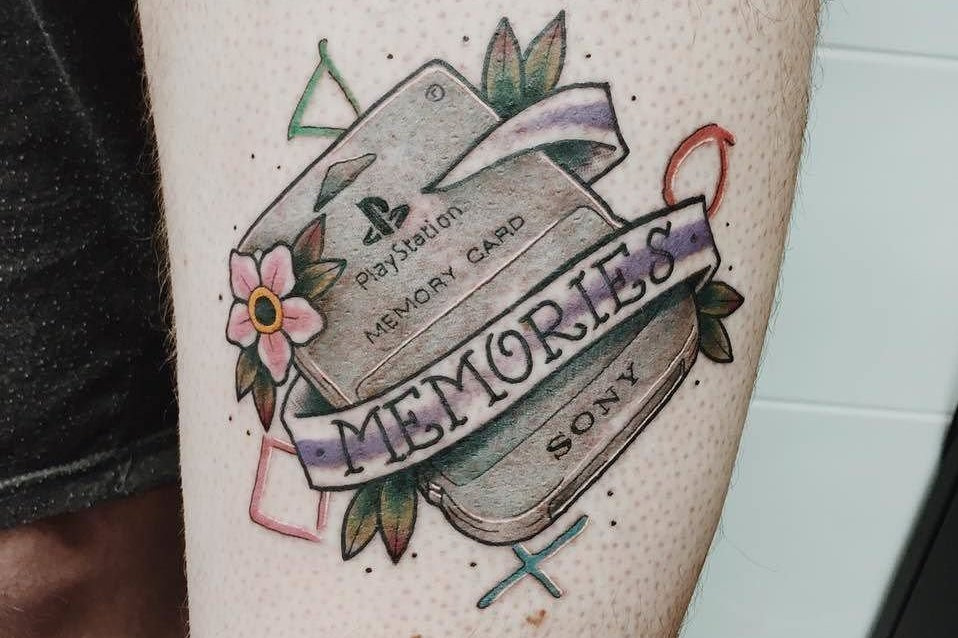
I will not forget my own mother. But then, in your old age, you will try to explain to your grandchildren in your old age, who have not even seen the HDD in your eyes, what you have shown
But the grandchildren will clap their eyes in bewilderment, because for them even “one-button” QTE, autoregeneration of health, shelters and checkpoints at every step will seem to be too harsh conditions of the game. And how can we explain to a person that we cherished more than hundreds of “achievements” of the “take a shot” level in the new era with a set of savings on a 1 MB sluggish chip? Emotions are emotions, but it's time to return to reality: today we will talk about which consoles tried on memory cards for the first time, which buried this standard, and remember what “gaming flash drives” were before the first USB Flash began to pace the planet.
The ability to save in classic consoles was not because the developers praised the skills of the players or waited for their games to take place "in one sitting" - it was just a tough time. Not only was the development of games conducted in assembly language and reminded the programming of microcontrollers rather than the modern igrostroi, so the lack of resources was so noticeable that the lack of performance in Full HD resolution of this Xbox One of yours is more the grumbling of jaded developers than the inadequate burden of development .
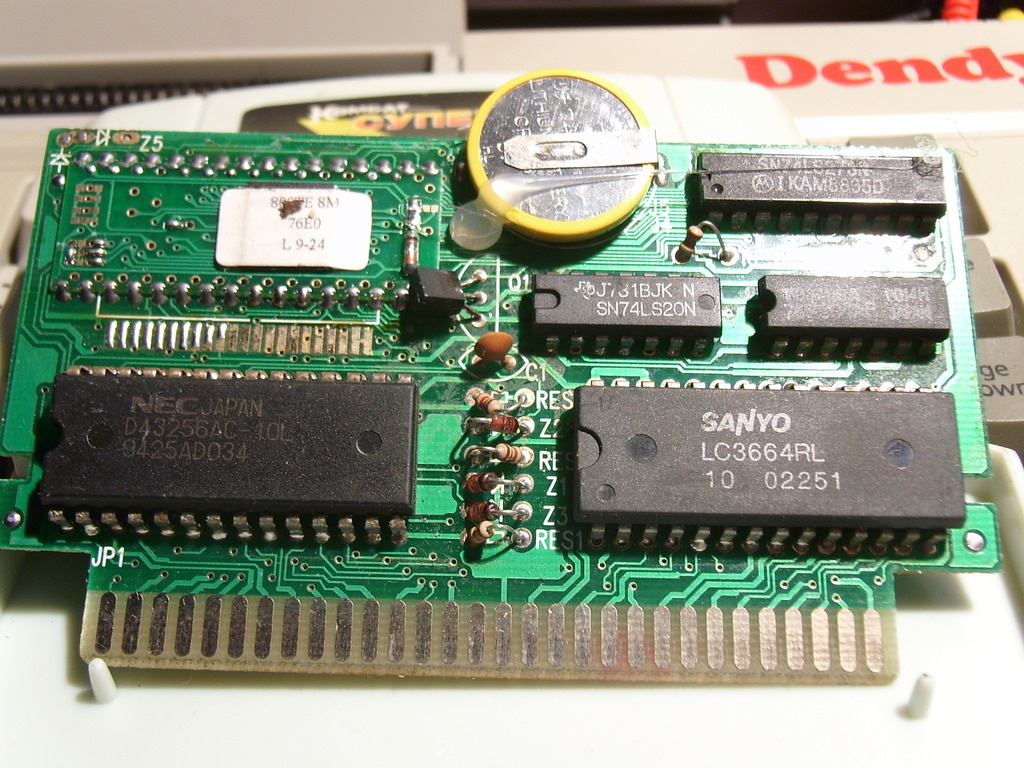
Most often, the ability to save in NES clones was found in training cartridges.
After all, even the capacity of cartridges in the era of 8-bit consoles was measured in tens of kilobytes (although “cartridges of individual architecture” in the same NES were popular), and the developers did not even think about the game state storage. First of all, for financial reasons - the developers paid a lot of money to the developers of consoles for the introduction of volatile memory in the licensed cartridge. Up to the 16-bit era, that is, 4 generations of consoles, games with the ability to save was disappearing a little. For example, for NES preservation were available except in large-scale RPG, like Ultima or Final Fantasy. And on the market of “clone” consoles and pirated media, except in a few training cartridges, there is at least some use from text editors.
How did gamers get out? Either they kept the console constantly turned on (one Japanese platformer lover “marinated” his SNES in this way for 20 consecutive years!), Or, long before Bilan's axiom, argued that “the impossible is possible.” That is, there were games with the ill-fated “Continue? 3 "or, at best, access codes to missions.

Both the battery cartridge and the battery were deficient in the 1990s
In 16-bit consoles, saving became a little less exotic, but only if we are talking about licensed cartridges. Because the pirates had eyes on their foreheads from the motley implementations of saves. In the popular Sega Mega Drive, for example, the save path was unloaded either in a manner similar to loading the next ROM, or the mapper simply switched the memory bank and read the second level code instead of the first one. And besides the “SRAM + battery” configuration, there were variants with a non-volatile serial EEPROM or FRAM ... In general, “do not repeat thisat home in a pirate factory”. Here are the pirates and did not repeat.
It’s not to say that the developers of the consoles themselves worshiped the cartridges - just with a well-established format of ROM carriers were worn for some time, like with a suitcase without a handle. In the modern world, something like this happens with Blu-ray.
Before the stars coincided (Sony's advertising budgets coincided with the gradual cheapening of the Compact Disk as a carrier) and the PlayStation came, the mainstream drives were cartridges, and the creators of the consoles modestly introduced new formats and “broken teeth” about the habits of the audience.
Nintendo was no exception, but the creators of the super-popular NES initially promoted not expensive CDs, but much more accessible floppy disks that were familiar on desktop computers. This is how the Famicom Disk System was born - a floppy addon for NES / Dendy. A RAM adapter with its own RAM for storing the program and sprites, a disk drive controller and a sound synthesizer microcircuit was connected to the cartridge connector, and double-sided floppy disks with a total volume of 112 KB acted as drives. Not so much, but the initial volume of the cartridge for NES was 48 KB.
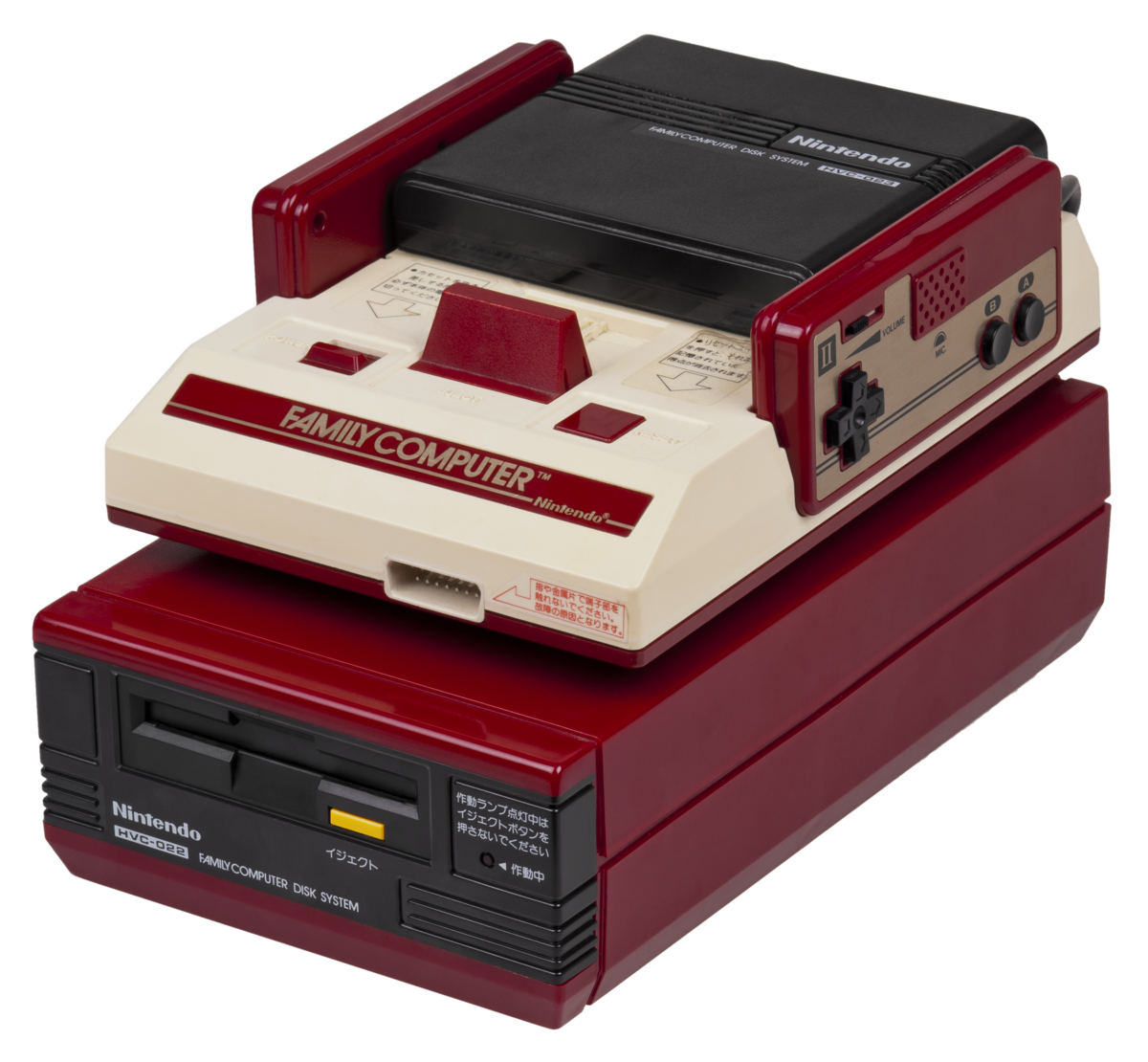
Attempts to make friends with NES floppy disks to success did not lead
In addition, as early as 1986, at the time the accessory was released, the cartridges were 10 times more expensive than floppy disks, and “killer features” became an opportunity for “pennies” to record a new game on an old floppy disk in the Nintendo branded machine. This for consoles did not offer anyone!
Thus, saving games on rewritable media has finally ceased to be a problem. But the floppy disks were constantly breaking down (poor protection from pollution), “exclusives” for a few owners of consoles with floppy support did not pay off, and DRM protection “spiraling” before Nintendo presented a new type of drives outside of Japan. In general, games with support for saving were ported to cartridges with a battery, but the idea of playing old games did not take root in a new way.
But already in the XXI century for the retro-gamers, miracle machines appeared that could stamp “fast saves” in real time for games with cartridges! For example, Nakitek Game Saver for SNES, which was connected as an intermediary between the console and the cartridge, and allowed to save / load the gameplay in an elementary way, or to reduce the speed of the game (to make it easier to pass, obviously!). The basic version stored the saves in real time, in the Plus version, the game progress was stored in the internal memory, as long as the charge was in six AA batteries, or until the power supply from the accessory was connected.
You don’t have to “play as intended”, but this is a good compromise for those who want to play not on a PC and an emulator, but do not go through the game in one fell swoop.

Nakitek Game Saver - “iron hack” in order to save and load games with cartridges in an arbitrary place
But all this is a replica, and in the era of the reign of 8-and 16-bit consoles save games remained exotic. But it was still possible to live with this state of affairs, because the games were aimed at young people, who had enough assiduity and free time to play the game, and the variability of classic games almost always fit into passwords to new levels, which were “saves” in the notebooks of avid players.
The first home console with support for memory cards was not exactly home and not exactly a console - the “24-bit” Neo-Geo of the 1990 model was a remake of the gaming machine for home use. Super-tech and indecently expensive console was based on the components of the slot machine, and did not become mass. But she asked a new fashion - the well-off guys were playing at home, and then shone with their achievements in local gaming clubs.

Today, the Neo-Geo design confuses the players, and at the dawn of the 1990s it was the most elite console!
The original memory cards with a capacity of 2 Kbytes with 18 cells to save were in themselves an achievement, and the “tuned” third-party versions counted 64 Kbytes and up to 156 cells! From a technical point of view, the card was a SRAM module with a lithium battery included. It is difficult to judge speed, because in nature there are no “benchmarks” for console memory cards.
It was a small matter - to turn memory cards from an accessory of elite consoles into a mass phenomenon.

It looked like the first memory card in gaming consoles
The massive circulation of memory cards in consoles coincided with the flourishing of games on CDs. Whether long, shortly, advertising, processor architecture and affectionate attitude towards developers among the consoles of the “nineties”, the most successful generation console was Sony PlayStation.
The main thing Sony brought with it to console Igroprom is standardization. The same game carriers are standard 700 MB compact discs. No detours and cartridges, as it was in the early era! Normal language C is a "healthy person" instead of dealing with assembler in game development. And uniform memory cards instead of the zoo options for saving in the same NES or Sega Mega Drive.
It is hardly possible to call the PS1 memory card exquisite - 128 KB non-volatile serial memory ( EEPROM ), divided into 15 blocks + proprietary file system. However, for the nineties, it was a good version of a small capacity drive, which will be constantly overwritten. And an 8-bit 8-pin serial port, similar in architecture to SPI and operating at 250 kHz. By the way, about the same Sony interfaces used for gamepads.
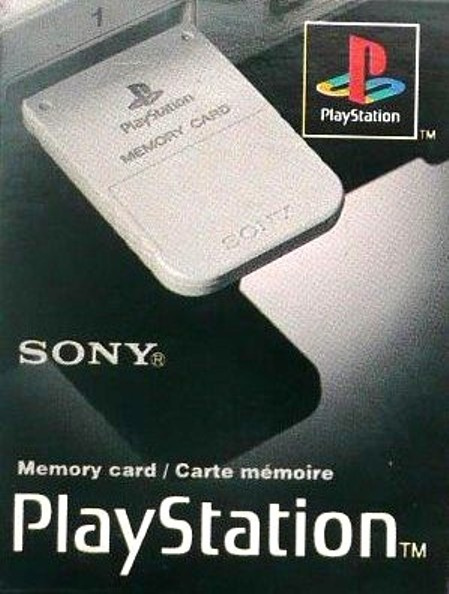
Oh, how many we went together, how many have seen ...
And you can’t say that the gamers lacked 15 memory blocks in abundance - most of the games were content with one cell, but even the stuffed with championships, auto models and tuning options Gran Turismo ate from 5 blocks and more (especially those who like to keep repeating the race) suffered. And the civilization II step-by-step strategy used 2/3 of the card's capacity, that is, 10 blocks at any stage of the passage! In such a case, there were non-original memory cards with a jumper, which could switch the “pages” of 15 blocks each. But that's another story ...
Curiously, the Playestation debut ascender, the Nintendo 64, was content with the classic combination of memory cards (32 Kbytes / 123 cells) with cartridges - the game media were not too impressive in terms of capacity and price, but loading in this configuration was much faster and more reliable. than the vagaries of the optical drive in the Sony console.
Memory cards finally ceased to be a wonder with the advent of the sixth generation of consoles - Sony PlayStation 2, Microsoft Xbox, Sega Dreamcast and Nintendo Gamecube were, perhaps, the latest consoles with a hard binding to the physical media games (CD / DVD). And at the same time, the latest mainstream consoles, which relied on memory cards as the main source of information storage until the end of their conveyor life.

The memory card for the Sega Dreamcast today looks like a child of pager and tamagotchi love ...
The most inventive among all manufacturers was Sega. VMU memory cards (Visual Memory Unit) not only were not installed in the console case, but in a gamepad, they also represented a kind of pager that flashed mini-games or auxiliary information (cartridges / health in Resident Evil, for example).
However, from a technical point of view, the Sega cards were “pastgen” and contained only 128 KB, while for the PlayStation 2, Xbox and GameCube, 8 MB drives became the standard, and even the division into “blocks” was a thing of the past - the volume of saving was measured in kilobytes . And finally, there was support for ECC, with which memory cards have increased their longevity.
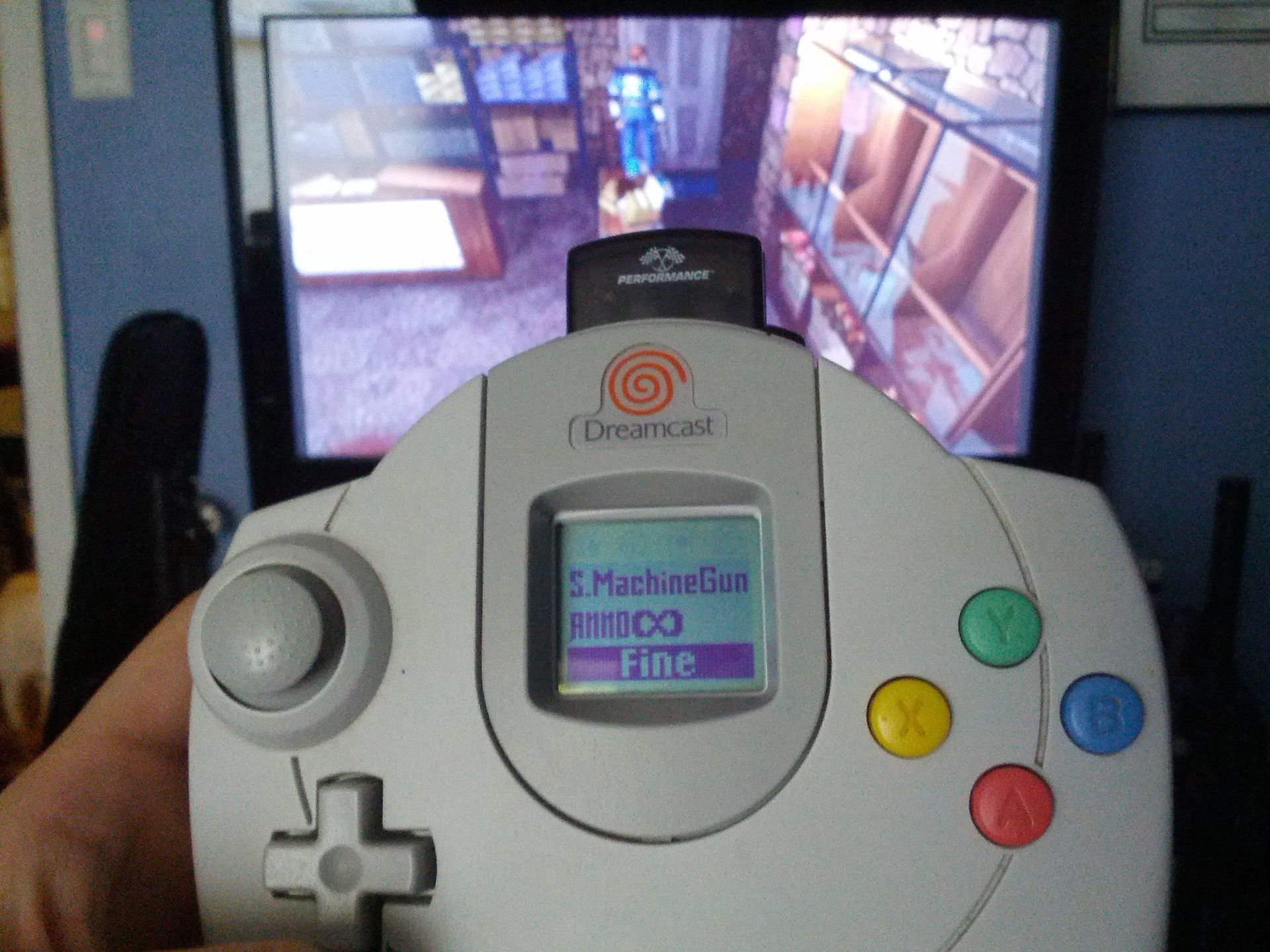
... but the mini-games and the transfer of UI elements to the screen in the gamepad are impressive today.
And the issue of durability was more acute, because the architecture of the cards also changed - now they relied on modern NAND flash memory, and instead of the “self-made” file system they used FAT (that is, they fed Microsoft and its Xbox from the heart ).
And it is also nice that "at the peak of form" memory cards finally became relatively fast drives. For example, in successive operations, the PlayStation 2 memory card accelerated to as much as 10 Mbps! True, in random reading / writing, the magic disappeared and the speed was sometimes reduced to 40 Kbps. And yet, what's the difference - the memory controller in PS2 still did not allow reading data at the limit of memory capabilities. Did not expand the flight of engineering fantasy and support for legacy-maps of the PSOne era in the PlayStation 2.
With the announcement of the Xbox 360 and PlayStation 3 consoles, there was a "bloody" format war - Microsoft was promoting the HD-DVD standard, Sony was in favor of distributing Blu-ray. As a result, all won ... hard drives, which in passing killed and memory cards as a phenomenon in game consoles of the seventh generation.
That is, no one prevented PS3 owners from buying an $ 60 adapter to import the save from the PlayStation 1 and 2, but in reality most gamers put up with the “loss” and instead played old games on old consoles. On the Xbox 360, importing the save from the old console was even more troublesome and, to put it mildly, undocumented.
Instead, a temporary “dance” began with the cost of buying games on Blu-ray discs (the first consoles were equipped with HDDs with a capacity of only 20 to 60 GB!), And as the games became “harder”, users mastered replacing the standard stupid HDDs with more modern options. PlayStation 3 is absolutely loyal to such manipulations, but the owners of the Xbox 360 learned to “ properly prepare ” the purchased HDDs, so that the console could identify the drives and be able to interact with them.
With the change of generations in the PlayStation 4 and Xbox One, little has changed - except that the Xbox capitulated and gained support for Blu-ray, and optical drives now look archaic. And finally, progress in games is almost always copied to the cloud storage and tied to the player account, and not just located on the HDD. And the export and import of save files can now be made to ordinary USB flash drives. True, without logging in to your account, you can hardly share your gaming achievements with a friend.
Realization of drives even in the most modern consoles is far from ideal - both the PlayStation 4 and Xbox One interact with the drives within the framework of the archaic SATA-II standard of the 2004 model.
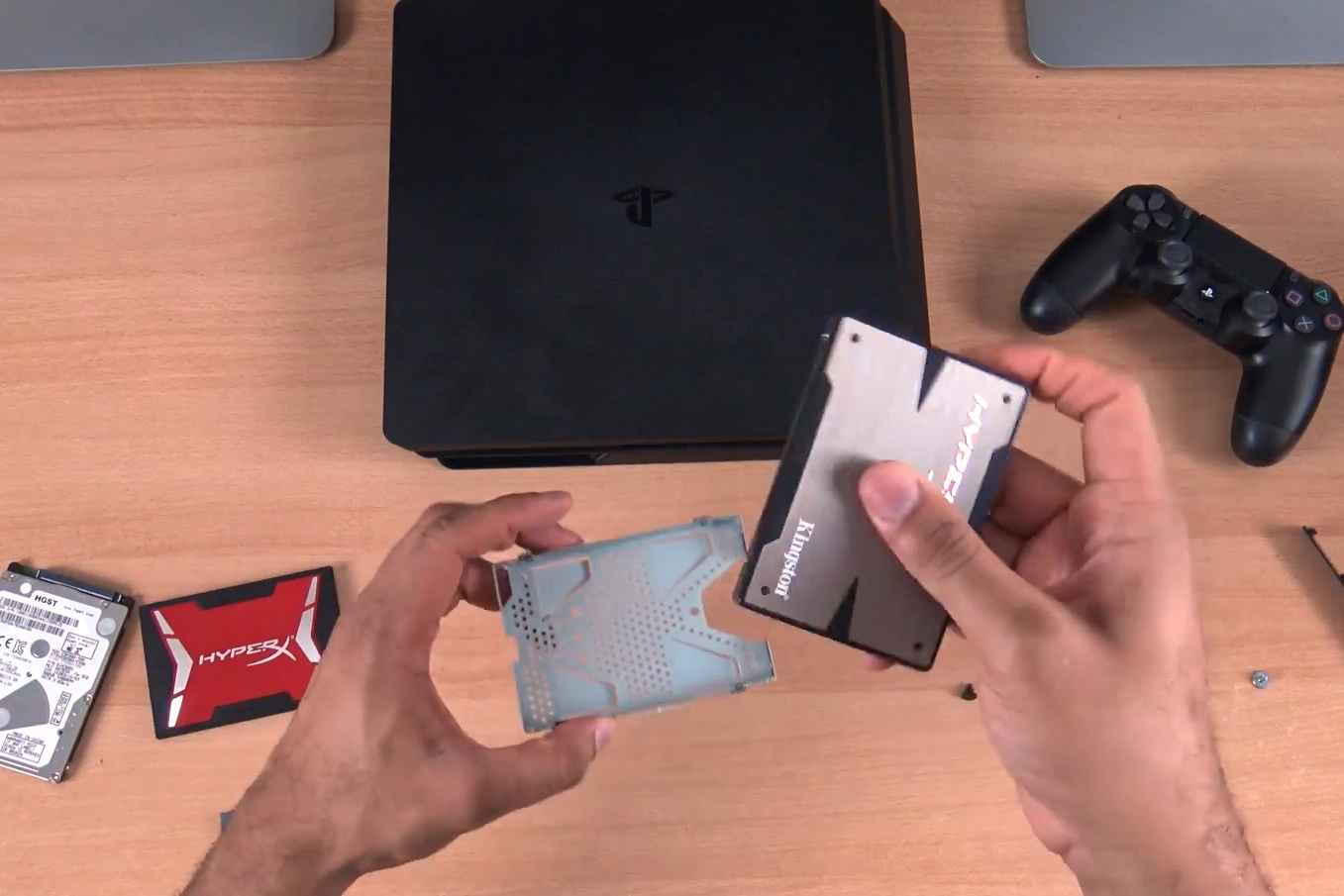
The era of cartridges and "pigs" was replaced by the computer-notebook tradition of HDD / SSD upgrade
Such a configuration is so "dull" that it would seem that there is nothing to upgrade in it? But we have already checked whether it makes sense to install SSDs on computers with support for older versions of SATA, and yes - there is a sense!
And in the case of the Xbox One, the performance of the external USB 3.0 drive will be higher than that of the internal one within the SATA-II! Your affairs are wonderful,Microsoft AMD! But this idea is to compare the speed of games on the Xbox One via USB 3.0 between the flagship flash drive ( HyperX Savage , for example), the no less flagship SSD (all of a sudden, HyperX Savage ) and the budget SSD, to find the “performance ceiling” when replacing drives in new consoles ! * writes in a notebook *
PlayStation 4, by the way, is also equipped with fast USB ports, but it works very selectively with drives. For example, the console simply did not "recognize" our 2-terabyte flash drive .
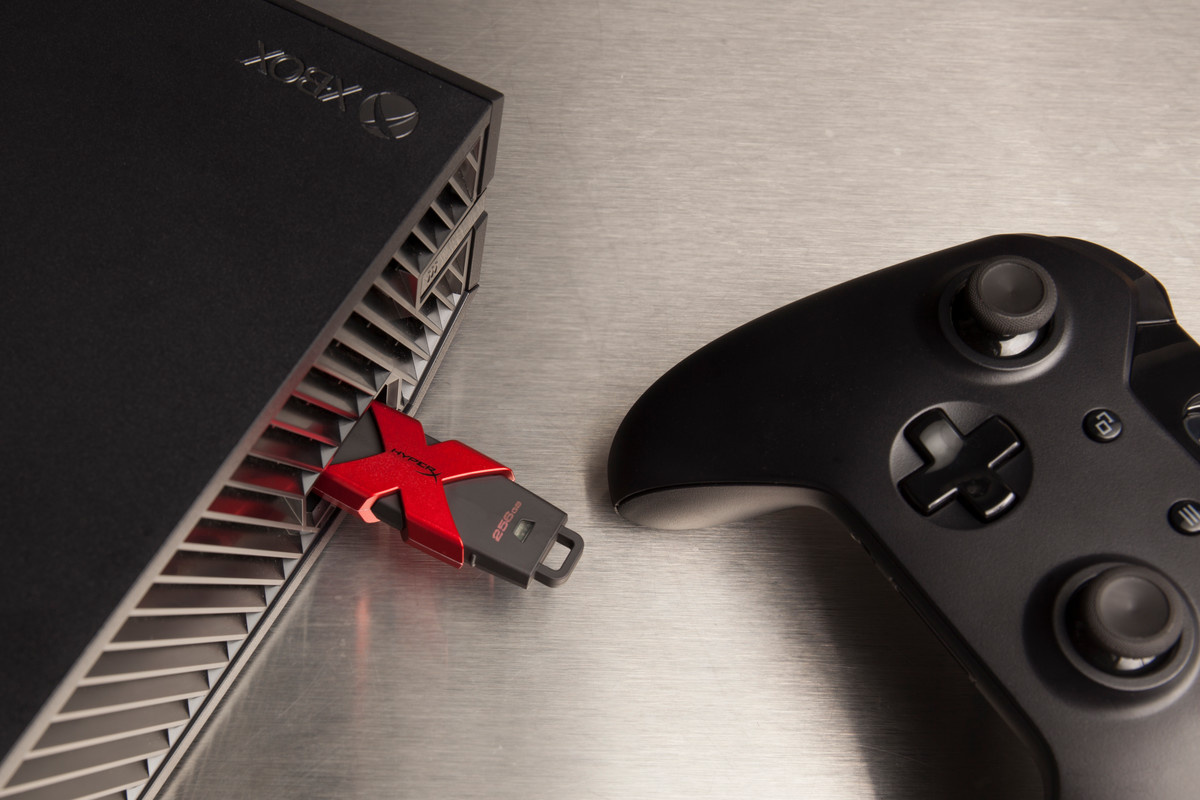
Xbox One is able to download games from a USB 3.0 drive faster than from an integrated HDD, limited by the speed limits of SATA-II
"Younger brothers" of desktop game consoles developed differently. Sony PlayStation Portable relied on proprietary UMD game discs and a MemoryStick card for multimedia content and saving. True, the entire conveyor life of the PSP pirates "pulled the blanket" over and reassigned the memory card as a drive for downloading games.
In the PS Vita console, the save files are on a PlayStation Vita card and are duplicated in the cloud storage. One may criticize Sony for proprietary drive formats, but at least there is an efficient way to backup the new console.

About the dead - either good or nothing (except the truth), but the PS PSita original drives didn’t add to its popularity.
But from the very beginning, Nintendo had some kind of tactic, and she followed it. The tactic was that the portable console is a personal thing, which means there should not be any portable memory cards in it. In Gameboy consoles, games were saved to the non-volatile memory of the cartridge, and in the newest Nintendo Switch, the progress of the game settles strictly on the internal drive. Moreover, in the current firmware it is impossible to even make a backup or send the save to the “cloud”!
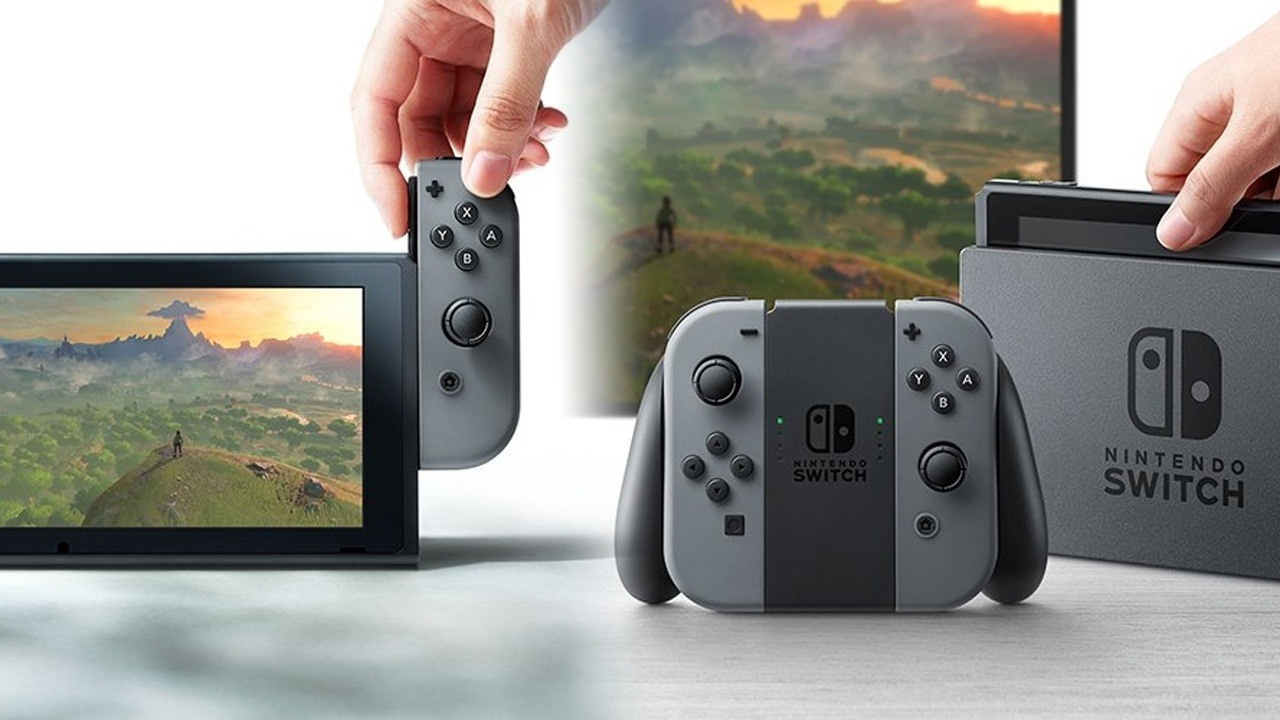
Nintendo Switch - the last hope of lovers of high-quality portable consoles
But “turning up” the Switch is rare, and the lack of internal memory for installing games is already a given . You can rely on Nintendo's proprietary ROM cards with games, but these are all half-measures, and the most modern portable console is already unable to hold new games without an external drive. Nintendo claims support for microSDXC U1 drives, that is, you can realize the potential of inexpensive and fast memory cards right now. Optimum, perhaps, will be memory cards with a capacity of 128 GB - today memory cards that squeeze the maximum speed out of the Nintendo Switch (Kingston SDC10G2, for example) are estimated at an average of 3,500 rubles.

Not the fact that the Switch will reveal the potential of UHS-I U3, but the microSDXC UHS-I U1 cards of this console are desperately needed
It is a pity that the era of computer clubs, games on a local network and one memory card for a company of friends is over. It is sad to see that today almost all games are completed with very loyally placed checkpoints and other kinds of “connivance” to lazy gamers. But it’s not the consoles and not the memory cards that are to blame for this - the world has just become faster, and now not only young and hot enthusiasts play games. Let's just be glad that the consoles have become faster, the eyes of the choice of games are running up, and behind the desired novelties you no longer need to stand in a queue at the cartridge case or at the counter on the market. Good games and fast iron!
To all computer enthusiasts who read the article and didn’t like what consoles are so sad about, we give a discount of 10% on HyperX Fury DDR4 modules (in any color). The discount is valid in "Yulmart" until May 29, 2017 on the promotional code HXCOLOUR . Let's hit the PC upgrade console unification!
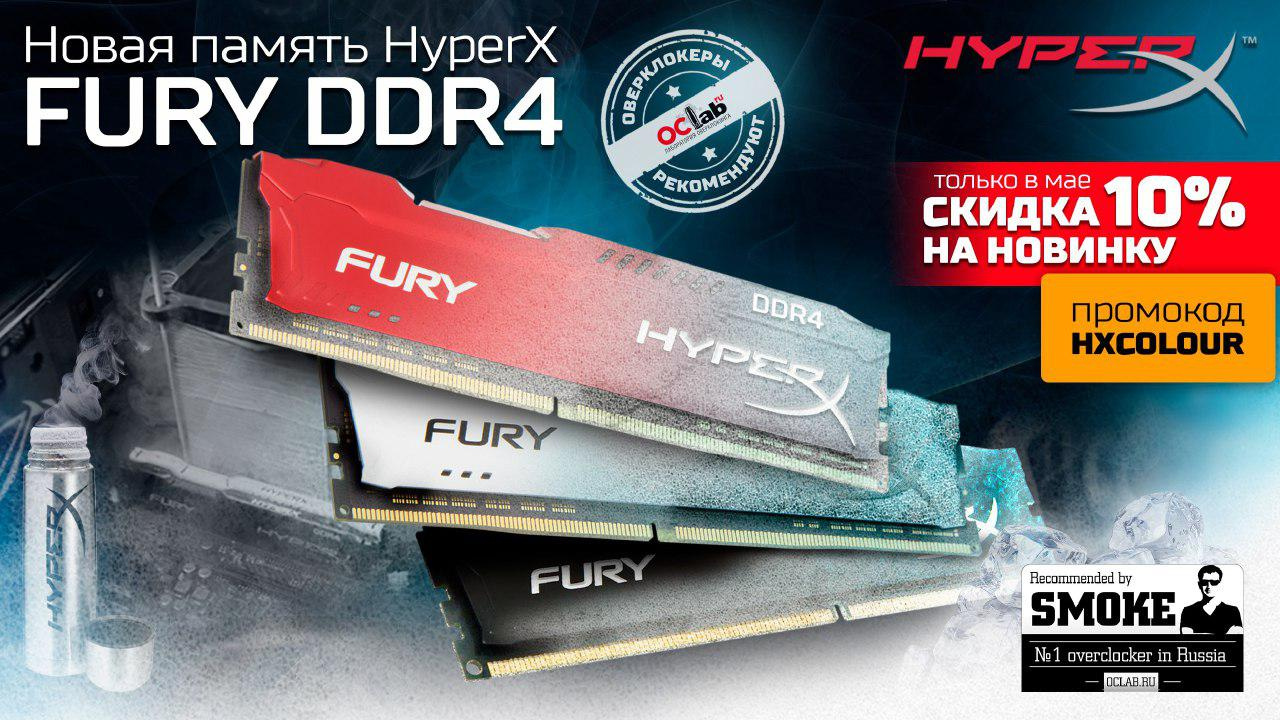
Subscribe and stay with us - it will be interesting!
For more information about Kingston and HyperX products, visit the company's official website . In choosing your kit HyperX help page with visual aids .

“... and gaming machines in the past had such a thing as a memory card, granddaughter. The technique was amazing! You used to go through a game, and everything you achieved in it stays with you in a tiny memory chip, less than a palm of your hand! We were so surprised when we realized that it was possible to play not in one gulp, but even without a notebook with recorded level passwords at hand ... ”.

But the grandchildren will clap their eyes in bewilderment, because for them even “one-button” QTE, autoregeneration of health, shelters and checkpoints at every step will seem to be too harsh conditions of the game. And how can we explain to a person that we cherished more than hundreds of “achievements” of the “take a shot” level in the new era with a set of savings on a 1 MB sluggish chip? Emotions are emotions, but it's time to return to reality: today we will talk about which consoles tried on memory cards for the first time, which buried this standard, and remember what “gaming flash drives” were before the first USB Flash began to pace the planet.
Saving games in classic consoles - the era of the "predominant"
The ability to save in classic consoles was not because the developers praised the skills of the players or waited for their games to take place "in one sitting" - it was just a tough time. Not only was the development of games conducted in assembly language and reminded the programming of microcontrollers rather than the modern igrostroi, so the lack of resources was so noticeable that the lack of performance in Full HD resolution of this Xbox One of yours is more the grumbling of jaded developers than the inadequate burden of development .

Most often, the ability to save in NES clones was found in training cartridges.
After all, even the capacity of cartridges in the era of 8-bit consoles was measured in tens of kilobytes (although “cartridges of individual architecture” in the same NES were popular), and the developers did not even think about the game state storage. First of all, for financial reasons - the developers paid a lot of money to the developers of consoles for the introduction of volatile memory in the licensed cartridge. Up to the 16-bit era, that is, 4 generations of consoles, games with the ability to save was disappearing a little. For example, for NES preservation were available except in large-scale RPG, like Ultima or Final Fantasy. And on the market of “clone” consoles and pirated media, except in a few training cartridges, there is at least some use from text editors.
How did gamers get out? Either they kept the console constantly turned on (one Japanese platformer lover “marinated” his SNES in this way for 20 consecutive years!), Or, long before Bilan's axiom, argued that “the impossible is possible.” That is, there were games with the ill-fated “Continue? 3 "or, at best, access codes to missions.

Both the battery cartridge and the battery were deficient in the 1990s
In 16-bit consoles, saving became a little less exotic, but only if we are talking about licensed cartridges. Because the pirates had eyes on their foreheads from the motley implementations of saves. In the popular Sega Mega Drive, for example, the save path was unloaded either in a manner similar to loading the next ROM, or the mapper simply switched the memory bank and read the second level code instead of the first one. And besides the “SRAM + battery” configuration, there were variants with a non-volatile serial EEPROM or FRAM ... In general, “do not repeat this
Saving where they shouldn't have been: a floppy disk drive for the NES and “grabbers” of game state from cartridges
It’s not to say that the developers of the consoles themselves worshiped the cartridges - just with a well-established format of ROM carriers were worn for some time, like with a suitcase without a handle. In the modern world, something like this happens with Blu-ray.
Before the stars coincided (Sony's advertising budgets coincided with the gradual cheapening of the Compact Disk as a carrier) and the PlayStation came, the mainstream drives were cartridges, and the creators of the consoles modestly introduced new formats and “broken teeth” about the habits of the audience.
Nintendo was no exception, but the creators of the super-popular NES initially promoted not expensive CDs, but much more accessible floppy disks that were familiar on desktop computers. This is how the Famicom Disk System was born - a floppy addon for NES / Dendy. A RAM adapter with its own RAM for storing the program and sprites, a disk drive controller and a sound synthesizer microcircuit was connected to the cartridge connector, and double-sided floppy disks with a total volume of 112 KB acted as drives. Not so much, but the initial volume of the cartridge for NES was 48 KB.

Attempts to make friends with NES floppy disks to success did not lead
In addition, as early as 1986, at the time the accessory was released, the cartridges were 10 times more expensive than floppy disks, and “killer features” became an opportunity for “pennies” to record a new game on an old floppy disk in the Nintendo branded machine. This for consoles did not offer anyone!
Thus, saving games on rewritable media has finally ceased to be a problem. But the floppy disks were constantly breaking down (poor protection from pollution), “exclusives” for a few owners of consoles with floppy support did not pay off, and DRM protection “spiraling” before Nintendo presented a new type of drives outside of Japan. In general, games with support for saving were ported to cartridges with a battery, but the idea of playing old games did not take root in a new way.
But already in the XXI century for the retro-gamers, miracle machines appeared that could stamp “fast saves” in real time for games with cartridges! For example, Nakitek Game Saver for SNES, which was connected as an intermediary between the console and the cartridge, and allowed to save / load the gameplay in an elementary way, or to reduce the speed of the game (to make it easier to pass, obviously!). The basic version stored the saves in real time, in the Plus version, the game progress was stored in the internal memory, as long as the charge was in six AA batteries, or until the power supply from the accessory was connected.
You don’t have to “play as intended”, but this is a good compromise for those who want to play not on a PC and an emulator, but do not go through the game in one fell swoop.

Nakitek Game Saver - “iron hack” in order to save and load games with cartridges in an arbitrary place
But all this is a replica, and in the era of the reign of 8-and 16-bit consoles save games remained exotic. But it was still possible to live with this state of affairs, because the games were aimed at young people, who had enough assiduity and free time to play the game, and the variability of classic games almost always fit into passwords to new levels, which were “saves” in the notebooks of avid players.
Only the rich can afford to persist.
The first home console with support for memory cards was not exactly home and not exactly a console - the “24-bit” Neo-Geo of the 1990 model was a remake of the gaming machine for home use. Super-tech and indecently expensive console was based on the components of the slot machine, and did not become mass. But she asked a new fashion - the well-off guys were playing at home, and then shone with their achievements in local gaming clubs.

Today, the Neo-Geo design confuses the players, and at the dawn of the 1990s it was the most elite console!
The original memory cards with a capacity of 2 Kbytes with 18 cells to save were in themselves an achievement, and the “tuned” third-party versions counted 64 Kbytes and up to 156 cells! From a technical point of view, the card was a SRAM module with a lithium battery included. It is difficult to judge speed, because in nature there are no “benchmarks” for console memory cards.
It was a small matter - to turn memory cards from an accessory of elite consoles into a mass phenomenon.

It looked like the first memory card in gaming consoles
Memory Cards - CD's best friends
The massive circulation of memory cards in consoles coincided with the flourishing of games on CDs. Whether long, shortly, advertising, processor architecture and affectionate attitude towards developers among the consoles of the “nineties”, the most successful generation console was Sony PlayStation.
The main thing Sony brought with it to console Igroprom is standardization. The same game carriers are standard 700 MB compact discs. No detours and cartridges, as it was in the early era! Normal language C is a "healthy person" instead of dealing with assembler in game development. And uniform memory cards instead of the zoo options for saving in the same NES or Sega Mega Drive.
It is hardly possible to call the PS1 memory card exquisite - 128 KB non-volatile serial memory ( EEPROM ), divided into 15 blocks + proprietary file system. However, for the nineties, it was a good version of a small capacity drive, which will be constantly overwritten. And an 8-bit 8-pin serial port, similar in architecture to SPI and operating at 250 kHz. By the way, about the same Sony interfaces used for gamepads.

Oh, how many we went together, how many have seen ...
And you can’t say that the gamers lacked 15 memory blocks in abundance - most of the games were content with one cell, but even the stuffed with championships, auto models and tuning options Gran Turismo ate from 5 blocks and more (especially those who like to keep repeating the race) suffered. And the civilization II step-by-step strategy used 2/3 of the card's capacity, that is, 10 blocks at any stage of the passage! In such a case, there were non-original memory cards with a jumper, which could switch the “pages” of 15 blocks each. But that's another story ...
Curiously, the Playestation debut ascender, the Nintendo 64, was content with the classic combination of memory cards (32 Kbytes / 123 cells) with cartridges - the game media were not too impressive in terms of capacity and price, but loading in this configuration was much faster and more reliable. than the vagaries of the optical drive in the Sony console.
The beginning of the two thousandths - the heyday of memory cards in consoles
Memory cards finally ceased to be a wonder with the advent of the sixth generation of consoles - Sony PlayStation 2, Microsoft Xbox, Sega Dreamcast and Nintendo Gamecube were, perhaps, the latest consoles with a hard binding to the physical media games (CD / DVD). And at the same time, the latest mainstream consoles, which relied on memory cards as the main source of information storage until the end of their conveyor life.

The memory card for the Sega Dreamcast today looks like a child of pager and tamagotchi love ...
The most inventive among all manufacturers was Sega. VMU memory cards (Visual Memory Unit) not only were not installed in the console case, but in a gamepad, they also represented a kind of pager that flashed mini-games or auxiliary information (cartridges / health in Resident Evil, for example).
However, from a technical point of view, the Sega cards were “pastgen” and contained only 128 KB, while for the PlayStation 2, Xbox and GameCube, 8 MB drives became the standard, and even the division into “blocks” was a thing of the past - the volume of saving was measured in kilobytes . And finally, there was support for ECC, with which memory cards have increased their longevity.

... but the mini-games and the transfer of UI elements to the screen in the gamepad are impressive today.
And the issue of durability was more acute, because the architecture of the cards also changed - now they relied on modern NAND flash memory, and instead of the “self-made” file system they used FAT (that is, they fed Microsoft and its Xbox from the heart ).
And it is also nice that "at the peak of form" memory cards finally became relatively fast drives. For example, in successive operations, the PlayStation 2 memory card accelerated to as much as 10 Mbps! True, in random reading / writing, the magic disappeared and the speed was sometimes reduced to 40 Kbps. And yet, what's the difference - the memory controller in PS2 still did not allow reading data at the limit of memory capabilities. Did not expand the flight of engineering fantasy and support for legacy-maps of the PSOne era in the PlayStation 2.
Modern type of console - the road through the SATA-II to the clouds
With the announcement of the Xbox 360 and PlayStation 3 consoles, there was a "bloody" format war - Microsoft was promoting the HD-DVD standard, Sony was in favor of distributing Blu-ray. As a result, all won ... hard drives, which in passing killed and memory cards as a phenomenon in game consoles of the seventh generation.
That is, no one prevented PS3 owners from buying an $ 60 adapter to import the save from the PlayStation 1 and 2, but in reality most gamers put up with the “loss” and instead played old games on old consoles. On the Xbox 360, importing the save from the old console was even more troublesome and, to put it mildly, undocumented.
Instead, a temporary “dance” began with the cost of buying games on Blu-ray discs (the first consoles were equipped with HDDs with a capacity of only 20 to 60 GB!), And as the games became “harder”, users mastered replacing the standard stupid HDDs with more modern options. PlayStation 3 is absolutely loyal to such manipulations, but the owners of the Xbox 360 learned to “ properly prepare ” the purchased HDDs, so that the console could identify the drives and be able to interact with them.
With the change of generations in the PlayStation 4 and Xbox One, little has changed - except that the Xbox capitulated and gained support for Blu-ray, and optical drives now look archaic. And finally, progress in games is almost always copied to the cloud storage and tied to the player account, and not just located on the HDD. And the export and import of save files can now be made to ordinary USB flash drives. True, without logging in to your account, you can hardly share your gaming achievements with a friend.
Realization of drives even in the most modern consoles is far from ideal - both the PlayStation 4 and Xbox One interact with the drives within the framework of the archaic SATA-II standard of the 2004 model.

The era of cartridges and "pigs" was replaced by the computer-notebook tradition of HDD / SSD upgrade
Such a configuration is so "dull" that it would seem that there is nothing to upgrade in it? But we have already checked whether it makes sense to install SSDs on computers with support for older versions of SATA, and yes - there is a sense!
And in the case of the Xbox One, the performance of the external USB 3.0 drive will be higher than that of the internal one within the SATA-II! Your affairs are wonderful,
PlayStation 4, by the way, is also equipped with fast USB ports, but it works very selectively with drives. For example, the console simply did not "recognize" our 2-terabyte flash drive .

Xbox One is able to download games from a USB 3.0 drive faster than from an integrated HDD, limited by the speed limits of SATA-II
Portable consoles - a new haven of memory cards
"Younger brothers" of desktop game consoles developed differently. Sony PlayStation Portable relied on proprietary UMD game discs and a MemoryStick card for multimedia content and saving. True, the entire conveyor life of the PSP pirates "pulled the blanket" over and reassigned the memory card as a drive for downloading games.
In the PS Vita console, the save files are on a PlayStation Vita card and are duplicated in the cloud storage. One may criticize Sony for proprietary drive formats, but at least there is an efficient way to backup the new console.

About the dead - either good or nothing (except the truth), but the PS PSita original drives didn’t add to its popularity.
But from the very beginning, Nintendo had some kind of tactic, and she followed it. The tactic was that the portable console is a personal thing, which means there should not be any portable memory cards in it. In Gameboy consoles, games were saved to the non-volatile memory of the cartridge, and in the newest Nintendo Switch, the progress of the game settles strictly on the internal drive. Moreover, in the current firmware it is impossible to even make a backup or send the save to the “cloud”!

Nintendo Switch - the last hope of lovers of high-quality portable consoles
But “turning up” the Switch is rare, and the lack of internal memory for installing games is already a given . You can rely on Nintendo's proprietary ROM cards with games, but these are all half-measures, and the most modern portable console is already unable to hold new games without an external drive. Nintendo claims support for microSDXC U1 drives, that is, you can realize the potential of inexpensive and fast memory cards right now. Optimum, perhaps, will be memory cards with a capacity of 128 GB - today memory cards that squeeze the maximum speed out of the Nintendo Switch (Kingston SDC10G2, for example) are estimated at an average of 3,500 rubles.

Not the fact that the Switch will reveal the potential of UHS-I U3, but the microSDXC UHS-I U1 cards of this console are desperately needed
It was, yes passed
It is a pity that the era of computer clubs, games on a local network and one memory card for a company of friends is over. It is sad to see that today almost all games are completed with very loyally placed checkpoints and other kinds of “connivance” to lazy gamers. But it’s not the consoles and not the memory cards that are to blame for this - the world has just become faster, and now not only young and hot enthusiasts play games. Let's just be glad that the consoles have become faster, the eyes of the choice of games are running up, and behind the desired novelties you no longer need to stand in a queue at the cartridge case or at the counter on the market. Good games and fast iron!
To all computer enthusiasts who read the article and didn’t like what consoles are so sad about, we give a discount of 10% on HyperX Fury DDR4 modules (in any color). The discount is valid in "Yulmart" until May 29, 2017 on the promotional code HXCOLOUR . Let's hit the PC upgrade console unification!

Subscribe and stay with us - it will be interesting!
For more information about Kingston and HyperX products, visit the company's official website . In choosing your kit HyperX help page with visual aids .
All Articles